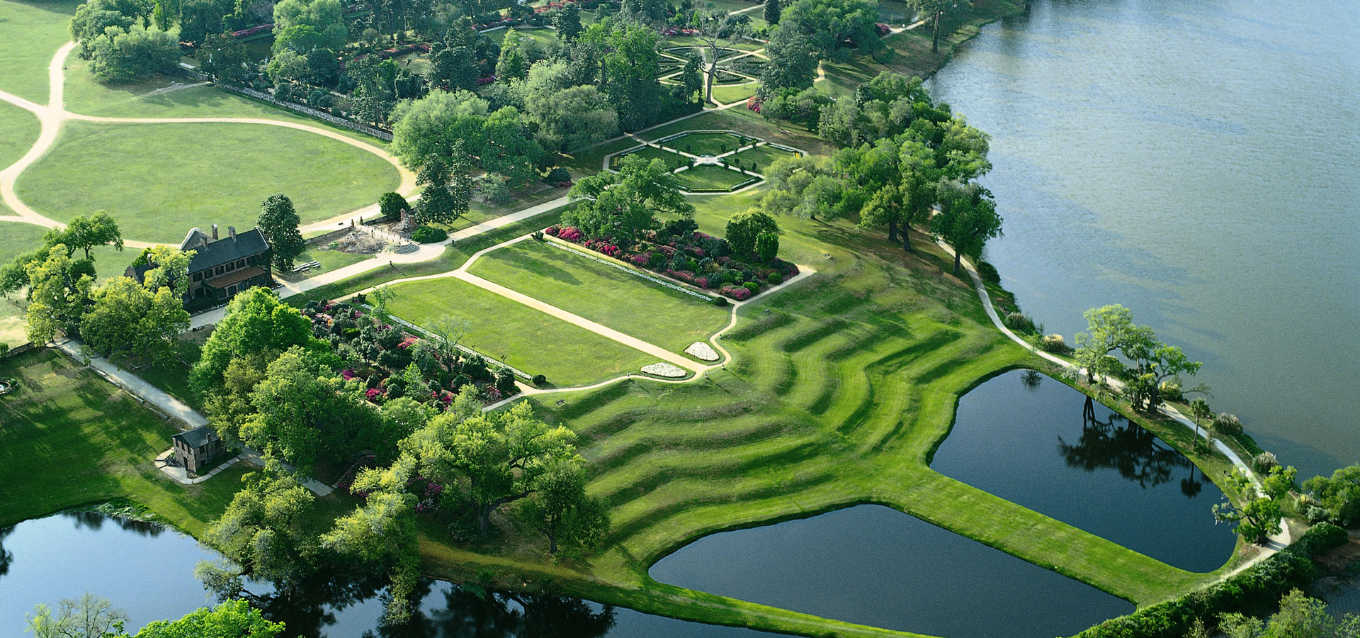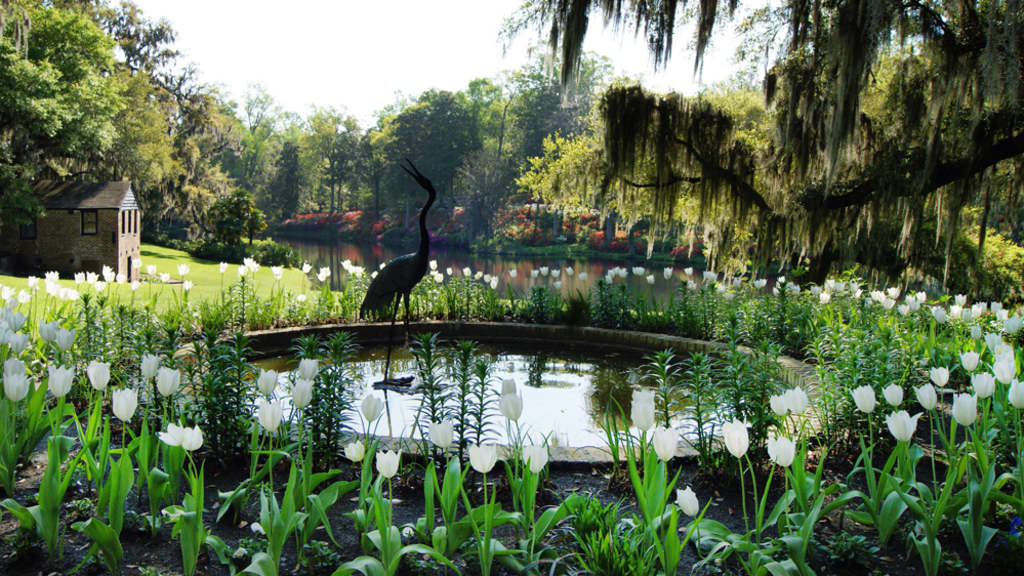
Middleton Place, located on the banks of the Ashley River near Charleston, South Carolina, is a significant site in American history and a testament to the grandeur of colonial and antebellum eras. Established in the late 17th century, it has evolved through generations, witnessing pivotal moments in the nation’s development. This article delves into the origins and historical significance of Middleton Place.

Contents
Origins and Establishment
The story of Middleton Place begins in 1675 when the property was part of a land grant to Edward Middleton, an Englishman who emigrated to South Carolina. His grandson, Henry Middleton, is credited with transforming the estate into a premier rice plantation and a stunning example of Georgian-style architecture and landscape design. The construction of the main house started in the early 18th century, and the estate expanded over the years to encompass meticulously designed gardens.
Architectural and Botanical Splendor
Henry Middleton’s vision for Middleton Place was inspired by European aesthetics, particularly those he encountered during his travels to England and France. The gardens, initiated in 1741, are the oldest landscaped gardens in the United States. They were designed in the classical style, featuring terraces, parterres, and reflecting pools that harmonized with the natural topography.
The plantation’s main house, along with its flanking wings, was completed in 1741. It showcased the symmetry and proportion typical of Georgian architecture, becoming a social and cultural hub in the region. Unfortunately, much of the original house was destroyed during the Civil War and later by an earthquake in 1886, but the surviving south flanker building has been restored and serves as a house museum today.
Role in American History
Middleton Place holds a significant place in American history. Henry Middleton, who established the gardens, became a prominent political figure, serving as President of the First Continental Congress in 1774. His son, Arthur Middleton, was a signer of the Declaration of Independence. The plantation thus became a symbol of both agricultural prosperity and patriotic fervor.
During the Civil War, Middleton Place suffered extensive damage. Union troops set fire to the main house in 1865, leading to a period of decline. However, the Middleton family’s resilience ensured that the legacy endured. They began restoration efforts in the early 20th century, focusing on both the remaining structures and the gardens.

Preservation and Legacy
Today, Middleton Place is a National Historic Landmark, meticulously preserved to reflect its historical significance and beauty. The Middleton Place Foundation, established in the mid-20th century, oversees the maintenance and educational programs, ensuring that visitors can appreciate the rich history and horticultural artistry of the estate.
The gardens, with their azaleas, camellias, and live oaks draped in Spanish moss, continue to attract horticulture enthusiasts and historians alike. The museum house, stableyards, and Eliza’s House (a freedman’s dwelling) offer insights into the lives of both the Middleton family and the enslaved people who worked the plantation.
Middleton Place is more than just a historical site; it is a living chronicle of American history, architecture, and horticulture. From its establishment in the 17th century to its current status as a cherished landmark, Middleton Place encapsulates the complexity of the American experience, marked by its splendor, resilience, and enduring legacy. Whether through its stunning gardens or its poignant historical narratives, Middleton Place continues to educate and inspire, bridging the past and the present in an ongoing dialogue about heritage and preservation.
A Comprehensive Review of Middleton Place: A Journey Through History and Nature
Nestled along the scenic Ashley River near Charleston, South Carolina, Middleton Place offers visitors a unique blend of American history, stunning landscape design, and rich cultural heritage. As one of the oldest landscaped gardens in the United States and a National Historic Landmark, Middleton Place provides an immersive experience wdbos into the life and legacy of the Middleton family. This review explores the key aspects of a visit to Middleton Place, highlighting its historical significance, gardens, museum, and overall visitor experience.

Historical Significance
Middleton Place is steeped in history, making it a must-visit for history enthusiasts. The estate was established in the late 17th century and became a prominent rice plantation under Henry Middleton in the 18th century. The property played a significant role in American history, with connections to key figures like Henry Middleton, President of the First Continental Congress, and Arthur Middleton, a signer of the Declaration of Independence.
Visitors can explore the museum house, which has been restored to reflect its 18th and 19th-century grandeur. The house offers a glimpse into the lives of the Middleton family, showcasing artifacts, period furniture, and historical documents. Guided tours provide in-depth information about the family’s contributions to American history and the plantation’s evolution over the centuries.
Gardens and Grounds
The gardens at Middleton Place are a highlight for many visitors. Designed in the classical style in 1741, they are the oldest landscaped gardens in America. The gardens feature a variety of horticultural elements, including terraces, parterres, and reflecting pools, all meticulously maintained to reflect their original design.
Visitors can stroll through pathways lined with azaleas, camellias, and live oaks draped in Spanish moss, creating a picturesque and serene environment. The seasonal blooms offer a different experience throughout the year, making repeat visits worthwhile. The Butterfly Lakes, Secret Gardens, and the Middleton Oak (one of the oldest live oaks in the country) are particularly notable.
Educational Programs and Demonstrations
Middleton Place is not just about passive observation; it offers interactive and educational experiences. The stableyards feature live demonstrations of traditional crafts and skills, such as blacksmithing, pottery, and weaving. These demonstrations provide insight into the daily lives of the people who lived and worked on the plantation, including enslaved Africans and freedmen.
Eliza’s House, a freedman’s dwelling, is another educational stop, offering a poignant look into the lives of the plantation’s enslaved people and their descendants. Interpretive panels and guided tours help to contextualize their experiences and contributions to the estate.
Visitor Amenities
The visitor experience at Middleton Place is enhanced by a range of amenities. The Middleton Place Restaurant offers a menu inspired by traditional Low Country cuisine, allowing visitors to enjoy a meal surrounded by the estate’s natural beauty. The Garden Market and Nursery provides an opportunity to purchase plants, books, and souvenirs related to the estate’s history and horticulture.
For those looking to extend their visit, the Inn at Middleton Place offers charming accommodations with views of the Ashley River, blending modern comfort with historical ambiance.
Overall Experience
A visit to Middleton Place is a richly rewarding experience, combining history, nature, and culture in a single destination. The well-preserved gardens and historical buildings provide a vivid glimpse into the past, while the educational programs and demonstrations bring history to life. The serene beauty of the grounds, coupled with the thoughtful interpretation of its complex history, makes Middleton Place a standout attraction.
Whether you’re a history buff, a gardening enthusiast, or simply looking for a peaceful retreat, Middleton Place offers something for everyone. Its dedication to preservation and education ensures that visitors leave with a deeper understanding of America’s history and a lasting appreciation for the beauty of this remarkable estate.
Read More Article About “Brand Identity: Building Trust and Loyalty with Customers“







